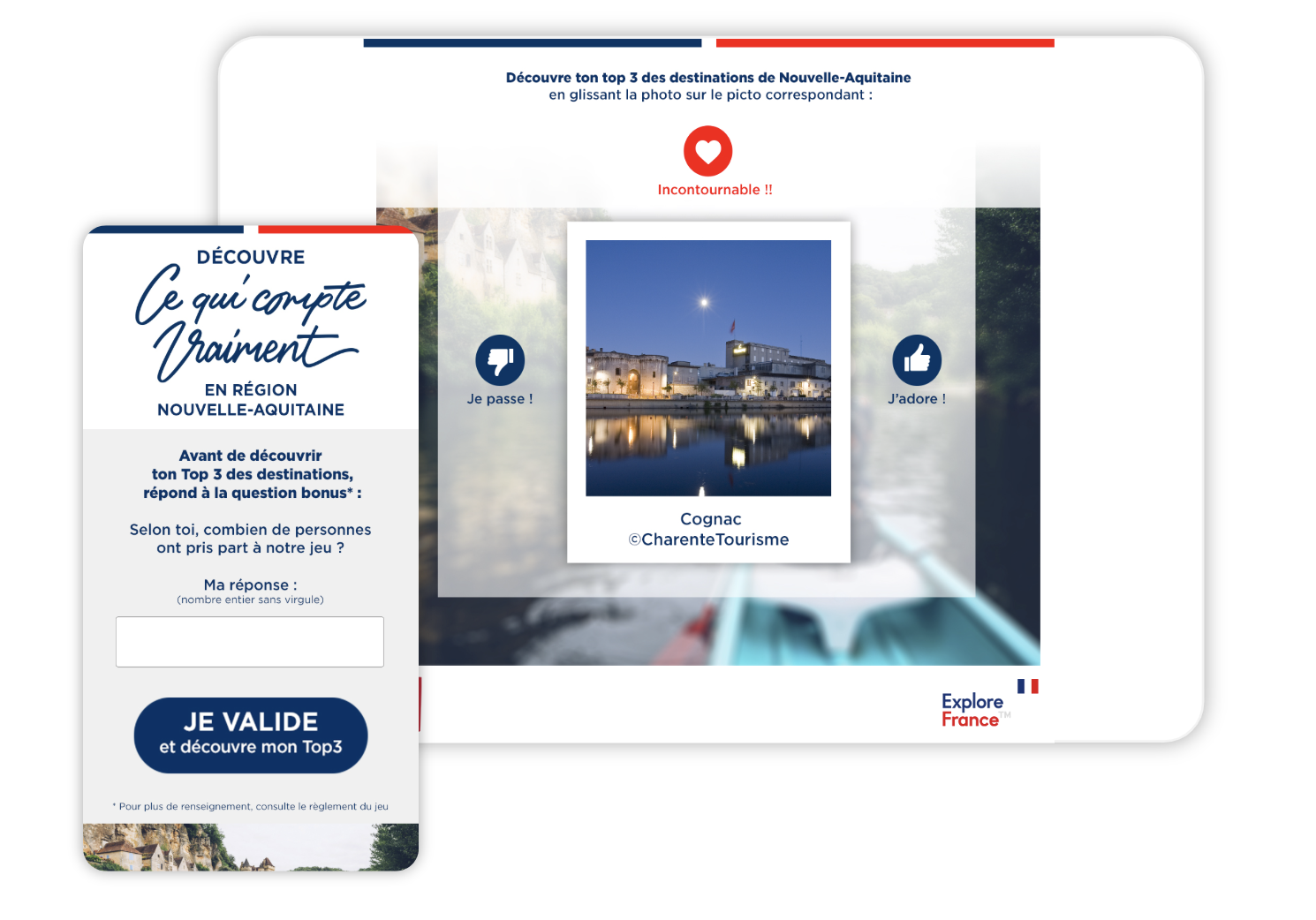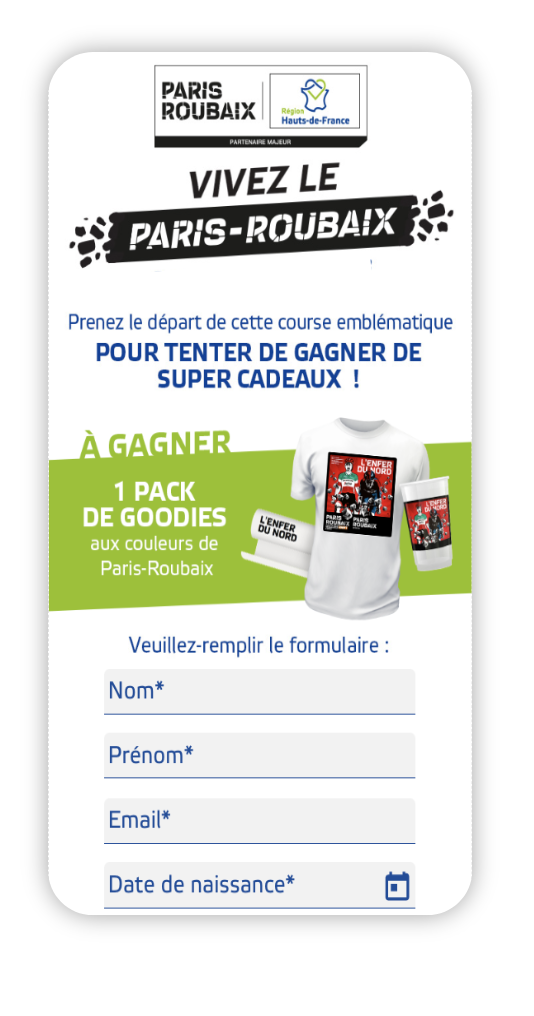Le marketing territorial a le vent en poupe. Avec l’essor du tourisme de proximité, les collectivités et acteurs touristiques locaux cherchent à promouvoir leur destination auprès des voyageurs. Pour se faire connaître et donner envie de partir à la découverte de son territoire, les acteurs du tourisme peuvent faire appel à la gamification. Ce levier innovant leur permettra de capter l’attention de leur audience et de les engager avant et après leur voyage !
What is regional marketing?
Le marketing territorial (on parle aussi de marketing régional ou marketing du tourisme) correspond à l’ensemble des leviers de communication mis en place pour faire la promotion d’une destination (ou des services liés à sa découverte).
Le principal objectif du marketing territorial est donc d’attirer les voyageurs en leur donnant l’opportunité de réserver des nuitées, des excursions sur place ou toutes autres prestations touristiques mettant en valeur le patrimoine culturel d’une localité.
The challenges of regional marketing
You can’t sell a tourist destination in the same way as you would a traditional product. The challenges of tourism marketing are specific, not least because they are part of a different timeframe. Interest in a destination will vary according to the season, but also according to holidays (particularly school holidays) and local events. The time between booking and departure is not the same either.
Companies therefore need to manage the wait before holidays start, by reassuring travellers and offering them resources to help them prepare for their stay.
Discovering a travel destination is also less tangible than a traditional product or service. That’s why it’s so important to create immersive marketing experiences that let you project yourself into a place you know nothing about. Territorial marketing also relies much more heavily on recommendations from previous travellers, who will play a key role in the appeal of a destination and the establishment of a relationship of trust.
Finally, those involved in tourism marketing also have to deal with increasingly intense competition. Destinations are vying with each other to capture the attention and arouse the curiosity of travellers who may be in the four corners of the world. Tourism operators must also adapt to the new expectations of travellers, who are looking for more authentic experiences and opportunities to mingle with the locals.
3 steps to strengthening your regional marketing strategy
Pour répondre à ces enjeux spécifiques au marketing territorial et se démarquer de leurs concurrents, les acteurs du secteur peuvent :
1. Réaliser un diagnostic de leur territoire pour identifier sa proposition de valeur unique. Chaque destination a un attrait spécifique, des traditions et un terroir à mettre en avant auprès des voyageurs. Ce diagnostic permettra non seulement de créer un message marketing plus impactant, mais aussi d’identifier les cibles les plus pertinentes auprès desquelles le délivrer.
2. Créer des expériences immersives incitant au départ. Pour donner envie de réserver ses vacances dans un territoire que l’on a souvent jamais visité, il faut pouvoir en partager un aperçu fidèle et attractif. La gamification peut être un excellent moyen d’immerger son audience dans un univers propre à son terroir afin non seulement d’inciter à la réservation, mais aussi de manager l’attente avant le départ.
3. Concevoir une stratégie marketing omnicanale. Pour porter ses fruits, le plan de communication mis en place doit non seulement décliner les différentes promesses faites aux voyageurs (via des campagnes ciblées). Mais aussi être diffusé sur différents canaux marketing afin de toucher le public le plus large possible et multiplier les points de contact avec les voyageurs intéressés. Les acteurs du tourisme peuvent par exemple faire appel à des influenceurs ou encore créer des campagnes de co-branding avec des marques offrant des services complémentaires, etc.
Gamification to boost regional marketing
Gamification, which involves incorporating playable interactions into marketing campaigns, is an excellent strategy for tourism operators. By offering immersive, playful experiences to their audience, they can help them discover their destination and make them want to set off to explore it.
1. Discover your destination
First and foremost, playable marketing is an excellent way ofraising the profile of your region. The game will give travellers the opportunity to immerse themselves in a new environment, maximising the time they spend with the company and therefore their desire to discover the destination.
The Nouvelle-Aquitaine region, for example, launched a Swiper competition to promote its landscapes to travellers from neighbouring countries. Supported by a targeted media campaign, the aim of the operation was to encourage people to discover the region. The game highlighted the diversity of the region’s landscapes and enabled the region toidentify participants’ preferences. The region was then able to target its retargeting campaigns at the destinations most attractive to them.


2. Engaging your audience with a marketing game
The challenge of regional marketing is to showcase your destination and capture the attention of travellers as they start to plan their next holiday. So there’s a real need to keep the audience entertained, all year round, to ensure that your region remains top of mind and attractive.
Interactive events, because they are fun and engaging, are an excellent way of generating curiosity among tourists and encouraging them to take action by giving them the chance to win attractive prizes (particularly discounts on their bookings).
The Hauts-de-France Region, for example, launched a campaign around the Paris-Roubaix race to engage its regional audience by immersing them fully in this iconic event. The game raised the profile of the race, with a high level of engagement: on average, each player played 2.12 games and spent more than 5 minutes on the game.


3. Make tourists want to come back
Marketing games can be an excellent way of building loyalty among travellers and persuading them to return by strengthening their attachment to the destination. Gamification can, for example, boost the effectiveness of a loyalty programme, as the Marriot Bonvoy hotel chain is doing. With each new booking, travellers can unlock exclusive games and access unique benefits (to upgrade their room, be offered additional services, etc.).
Conclusion
La gamification est un excellent moyen pour les spécialistes du marketing territorial de booster l’attractivité de leur destination. Captez l’attention des voyageurs et donnez-leur envie de découvrir votre terroir en les engageant via des animations immersives. Adictiz vous propose un catalogue de jeux marketing à personnaliser pour générer plus de réservations !








